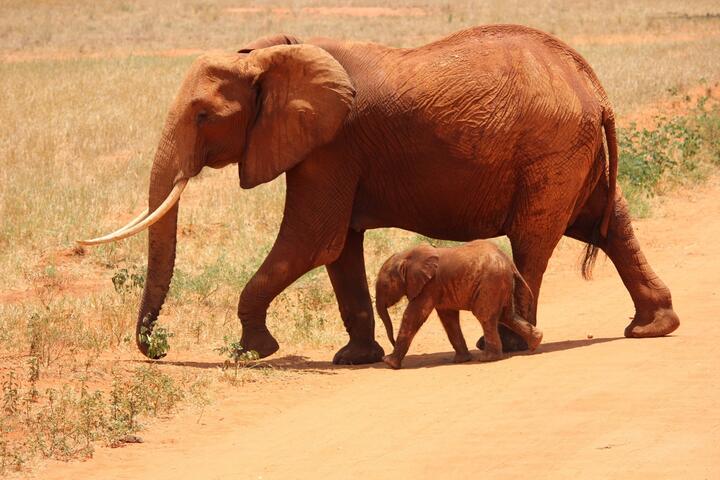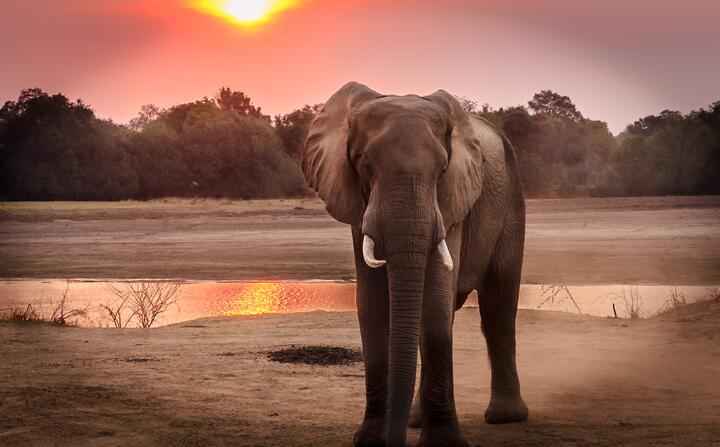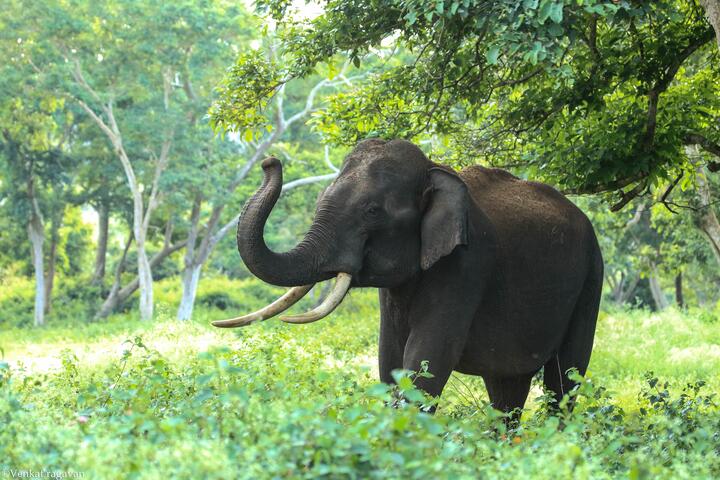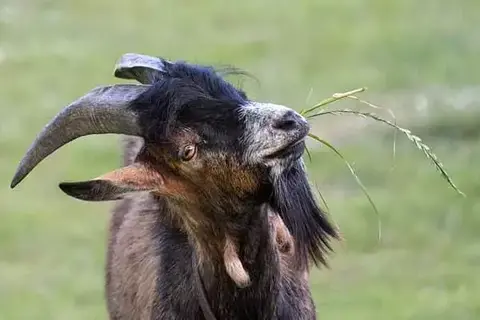How Much Does Elephant Weigh At Birth?
Karla MillerThe elephant is the largest land animal on Earth. The size of the giant is amazing. Animals weigh differently, depending on the species. As for physical strength, no one can surpass them here, too. After the elephant, the places of the strongest animals are rhinoceros, hippopotamus, buffalo, and, of course, a lion. This will be the top five strongest animals on the planet. And what is the approximate weight of the elephant?
Elephant varieties
 Photo by Pixabay on pexels
Photo by Pixabay on pexelsGiants are distinguished by their habitat. The homeland of one species in Africa, the second exists in India.
The African continent is home to savannah and forest elephants. The first is the largest animal on the planet, while the forest is less powerful. Males are much larger than females. The size of the savannah species reaches up to 7.5 meters in males. Their height at the highest point of the body is 2.5-3.5 meters.
Indian elephants are also divided into species and subspecies. The smallest of them lives on Kalimantan Island. On average, the body size of an Indian male reaches 6.5-7 meters. Females are much smaller.
How much does the largest elephant in the world weigh?
All kinds of giants are similar to each other. Savannah representative is distinguished by the most powerful structure. It is characteristic of it:
•strong body;
•short neck;
•huge ears;
•large head;
•massive extremities;
•powerful tusks;
•long trunk.
The average weight of this species of animals in males – 7 tons, females – 5 tons. The maximum record in the weight category was recorded in the Guinness Book back in 1974. The animal shot then at weighing has shown the result in 12 with small tons. For comparison, Indian elephants weigh much less: male – up to 5 tons, female – up to 2.7 tons.
How much does a newborn elephant weigh?
 Photo by Harvey Sapir on pexels
Photo by Harvey Sapir on pexelsElephant cubs immediately after birth are very vulnerable and often become prey to lions. It is not always possible to repel a giant from predators their offspring. The weight of a newborn elephant ranges from 80 to 140 kilograms. He is under the care of a vigilant mother for a long time.
Only by ten years of his life elephant gaining the weight and size that makes him invulnerable to predators. The final formation of these animals occurs at the age of 20 years.
Lifestyle of giants
Since giants feed on branches, leaves, and tree bark, there must be vegetation in the accessibility area. Animals also can’t go far from water. But since the herd needs new sources of food as the old ones are exhausted, it has to constantly migrate. Animals walk 12 kilometers a day, and in a year they can overcome 500 kilometers.
The herd reigns a matriarchy. The reins, as a rule, are taken over by the old elephant. In addition to her, the group includes her offspring already with their cubs. In total, in such a family there are 9-12 individuals. The main female decides everything: where and how much to feed, when, and where to go on a new journey. Her power in the herd lasts up to 60 years, after which she goes to her eldest daughter, and so on.
The males are expelled from the herd after they grow up. Sometimes they roam one by one, and sometimes they gather in groups. Only when one of the females is ready for mating, there is a rapprochement and contact with one of the males. Sprawling groups are separated with time; small groups, on the contrary, can unite.
Communication within a group takes place with the help of touches and sounds. Elephants also take certain poses to express their moods or needs. If family members have had to separate, they express their greetings very vigorously when they meet and enjoy each other. Fights are rare and come down to poke and tusk. More often than not, males make threatening gestures and clap their ears.
Interesting facts about elephants
Tusks grow with an elephant throughout his life. By their size, you can judge the age of the giant. The fixed record weight of one tusk – 225 kg. Root teeth are exchanged three times during his life, replacing the old ones with new ones. When the last teeth are erased, the animal dies of hunger. Usually, it happens in 65-70 years, so the life span of an elephant is quite comparable with a human.
Elephants, like people, are right-handed and left-handed. And you can notice it by the fact that the tusk is more often used by the animal, it will be more worn out.
With its trunk, giants can hold the weight of a quarter ton. This muscular organ can hold up to 7.5 liters of water simultaneously.
The elephant’s ears have a double function. The giant uses them in the heat like a big fan. Also, due to the developed network of vessels’ ears help to cool the blood, getting rid of excessive heat. And the pattern of veins on the surface of the ear can be compared with human fingerprints – he is always individual.
The skin of animals is 2-4 centimeters thick. There is even a saying to this: ‘Thick as an elephant’. Despite this fact, the skin is sensitive. And it has to take dust and mud baths to create a protective crust. The same technique helps not to burn in the sun.
How Much Does an Elephant Weigh at Birth?
 Photo by Venkat Ragavan on pexels
Photo by Venkat Ragavan on pexelsThe first thing to know about an elephant’s birthweight is that it is considerably heavier than a human child. An elephant’s brain, for instance, weighs approximately 35 percent of its body weight. Considering that humans aren’t even three feet tall, the size of an elephant’s newborn will be a shock to most people. But the fact remains that it is incredibly heavy compared to a human baby!
An elephant’s gestation period can be longer than the rest of the mammals. An African elephant’s calf can live for 22 months. While an Asian elephant’s gestation period is only 21 months, the newborn calf will weigh an estimated 1,000 pounds by the time it is nine months old. A baby elephant is dependent on its mother right after birth because he/she is not fully developed. While an infant elephant may be able to stand up immediately after birth, other skills take longer.
In addition to their massive body, elephants have a short gestation period, ranging from about 2 months to about two years. A female elephant can give birth to a single baby only once, while an adult elephant may have multiple babies in the same litter. In the first six months, an African elephant can gain between 360 and 540 pounds. By the time an adult elephant is about six months old, it will be weighing anywhere from 730 to 1,095 pounds.
An elephant’s gestation period varies greatly, but is generally nine to twelve months. A baby elephant can weigh anywhere from 950 to 13,000 pounds, and its newborn baby will weigh about a third of that. An Asian elephant’s gestation period is only 21 months, while a female’s gestation period is a little more than a year. A baby elephant is not a vegetarian. It can’t choose not to eat meat, but it can choose to consume plants.
The African elephant’s gestation period is the longest of all mammals. The Asian elephant’s gestation period is even longer. Both sexes have their own special personalities. The female is usually the only one to give birth. Although the male’s weight is higher than the female’s, an African elephant’s baby is heavier than a human. Its suckling is an expression of the mother’s love.
A baby elephant’s weight increases rapidly, but it doesn’t gain weight as fast as a human. The elephant’s heart pumps about fifteen liters of blood every minute. A baby elephant’s weight varies by species, and live-born babies are about twice as heavy as their siblings. But, the baby’s weight increases dramatically after the first year. This is an impressive rate for a human.
The elephant’s gestation period is a remarkable 22 months. This means that the calf weighs more than a human calf. An elephant’s uterus has a very long gestation period. In fact, the female’s calves’ calves are smaller than human babies! After birth, the calf relies heavily on its mother. Its brains aren’t fully developed yet, so it’s crucial for the baby to depend on its mother for food. It also needs time to learn other things.
In addition to their size and gender, an elephant’s birth weight also has many important physical characteristics. An adult elephant has 26 teeth, but its entire life, a mother will have five sets. However, the final set of teeth won’t be used until the animal is in her 50s. In contrast, the female elephant has a massive ear and large tusks. But its ears are not the only feature of an ostrich.
In fact, the baby elephant’s weight is even more impressive. A baby elephant weighs about three times as much as a human calf. While most elephants have a single baby, they can also have twins, though they are rare. The mother’s weight is determined by her age and whether or not she is breastfeeding. If the mother is breastfeeding, it’s natural for her to be in the same uterus for her entire pregnancy.
- LivestockWhat Can Goats Eat?

- DogsHelp Dog Ear Problems NaturallyBy Charlotte Green

- WildlifeTypes Of Lemurs In MadagascarBy Murphy Scott

- RodentsInteresting And Surprising Facts About The CapybaraBy Nolan Foster

- WildlifeHow Often Do Deer Have Babies?By Khai Dove

- RodentsHamster Or Guinea Pig: Who Should I Choose?By Charlotte Green

- RodentsFun Facts About MuskratBy Evelyn Star

- DogsCan Chinchilla Eat Carrots?By Karla Miller

- RodentsCan Guinea Pigs Eat Apples?By Nolan Foster

- WildlifeWhat Is The Koala Bear Diet?By Lucas Torres
